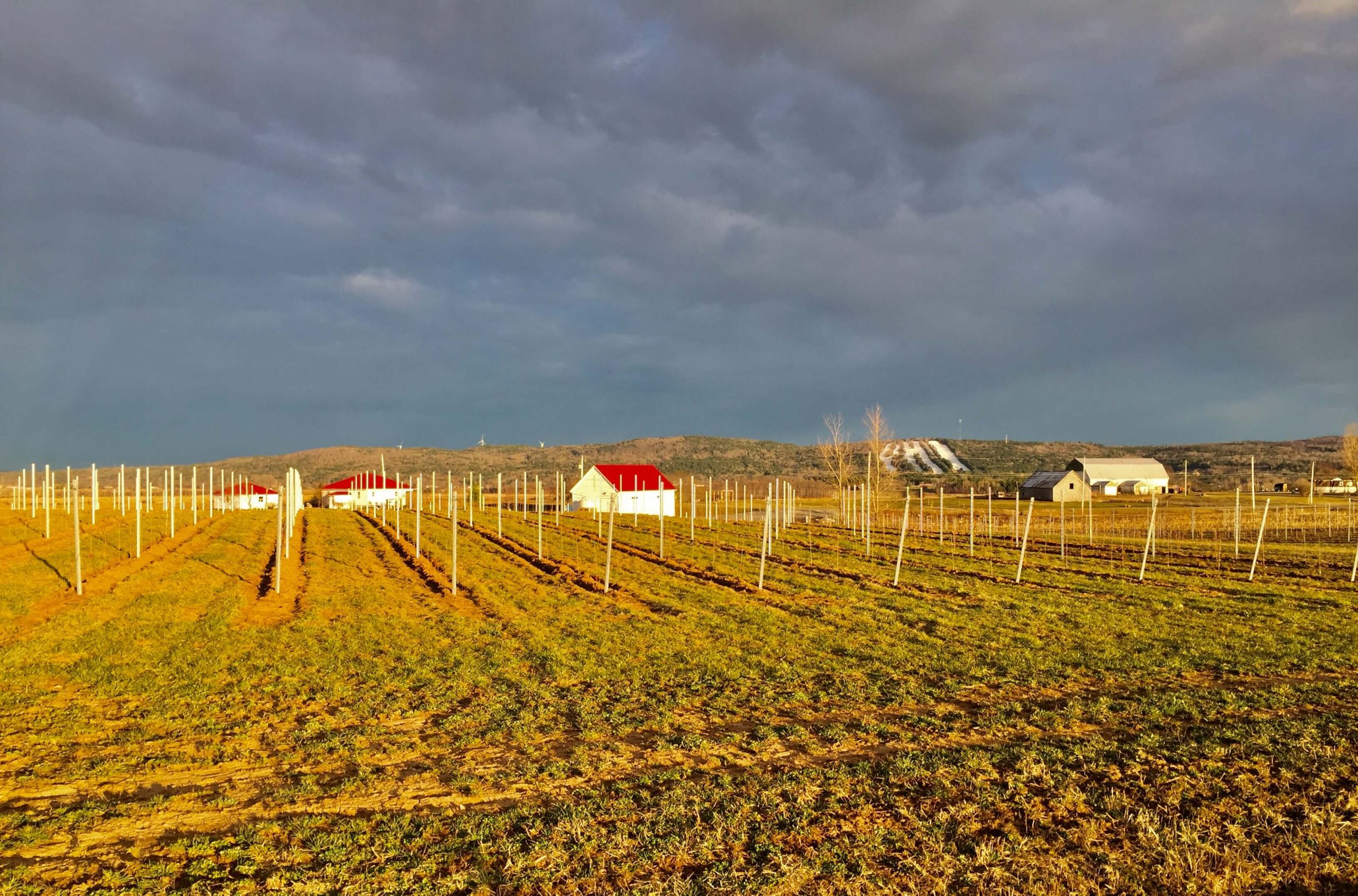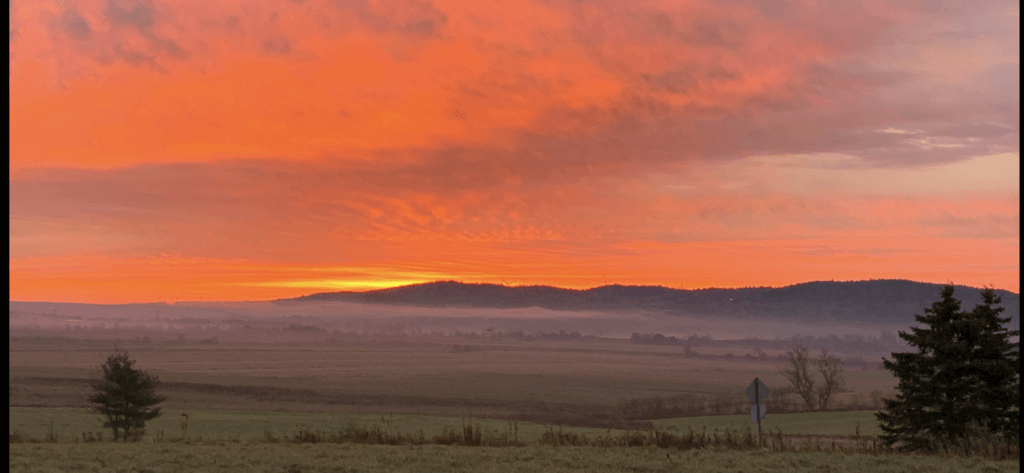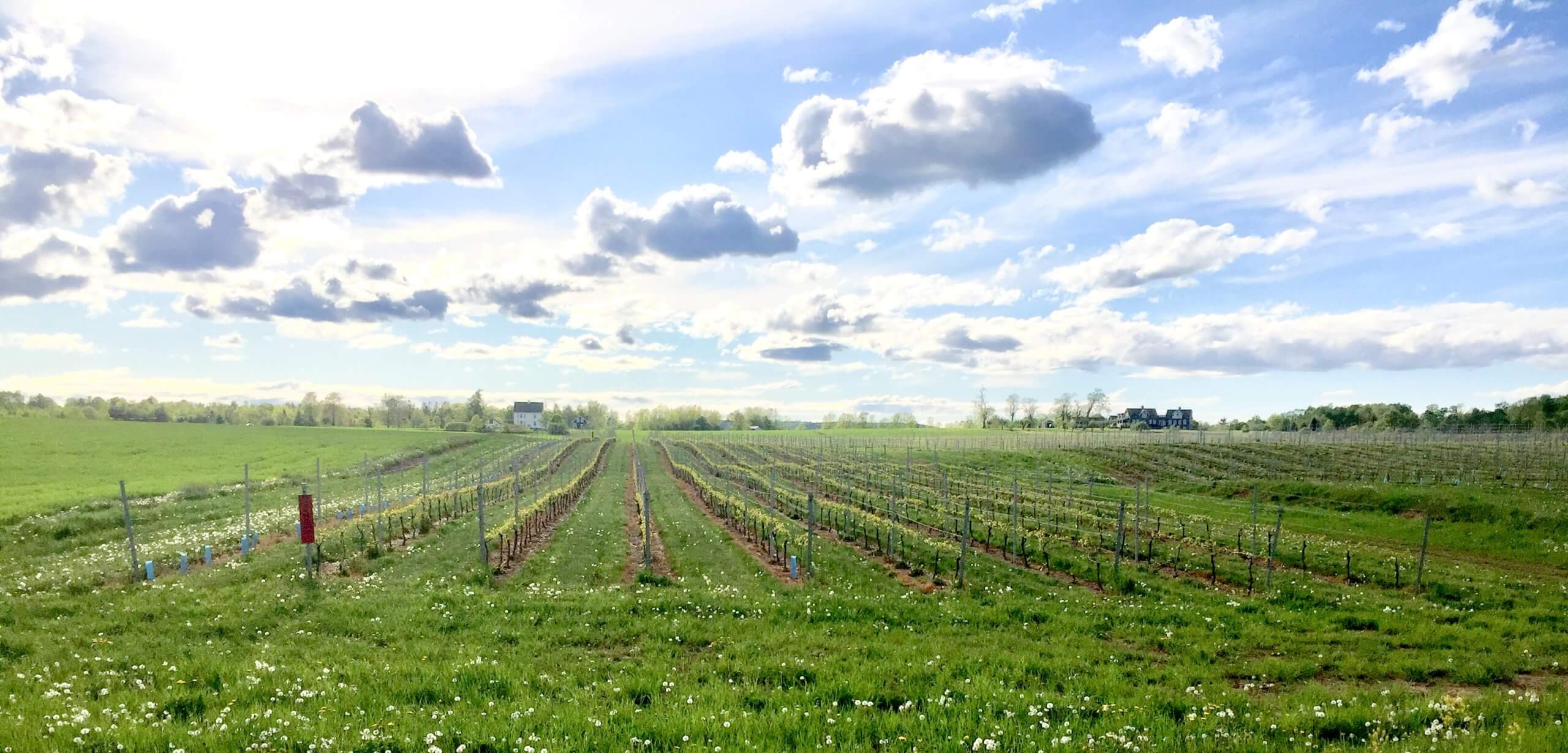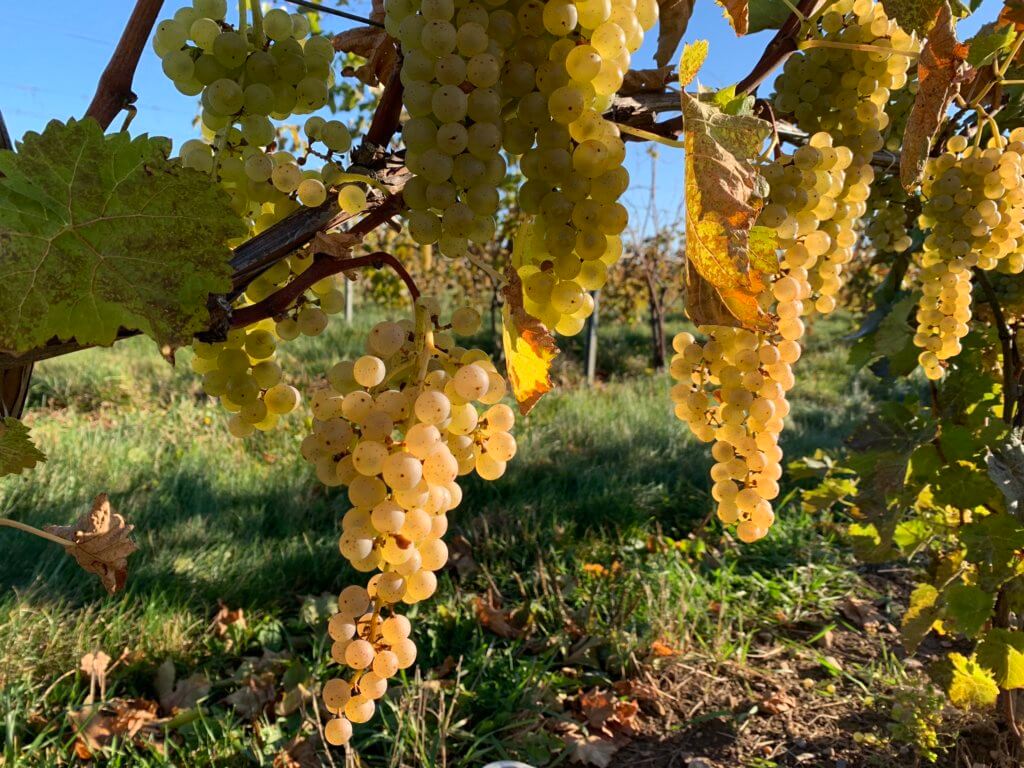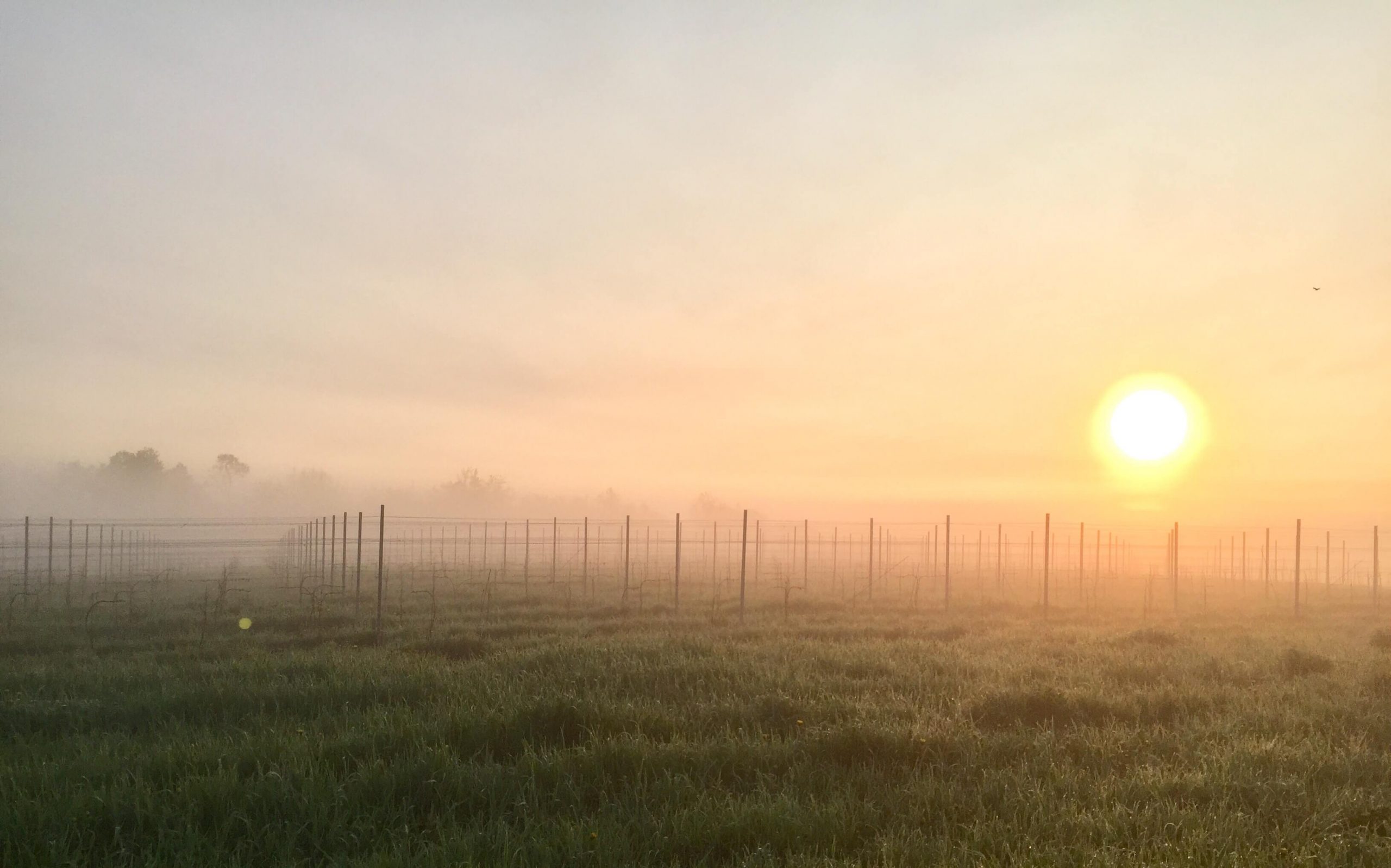Late afternoon sun in early spring 2017. Martock ski area is in the background
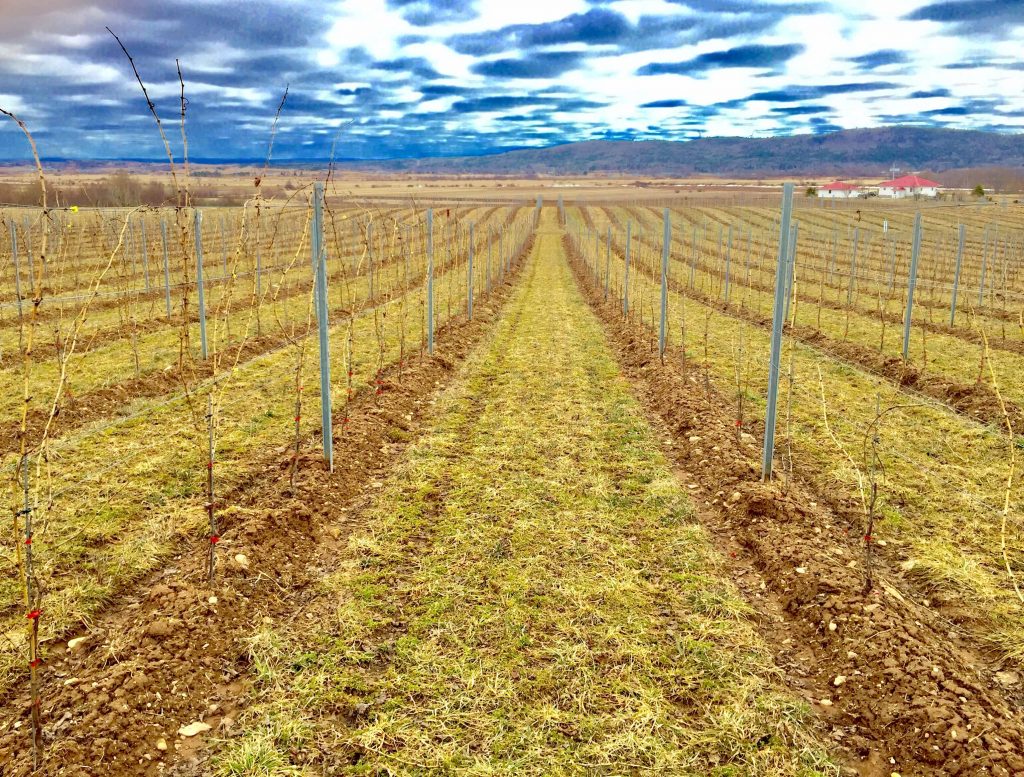
Two year old Petite Pearl not pruned on the left and pruned but not tied down on the right
Pruning
Pruning must finish before the buds swell too much as the risk of injury to the buds is increased. Marquette, Cabernet Foch and Chardonnay buds broke first followed by Petite Pearl and Muscat. Riesling and Vidal followed. Three canes were preserved for each single trunk vine – one was discarded when the fruiting canes were tied down. This was not time efficient and will not be done again. As the vines age and the canes get thicker a mechanical pre pruner would be helpful. This cuts off the tops of the vines making the lower portion more accessible to hand pruning.
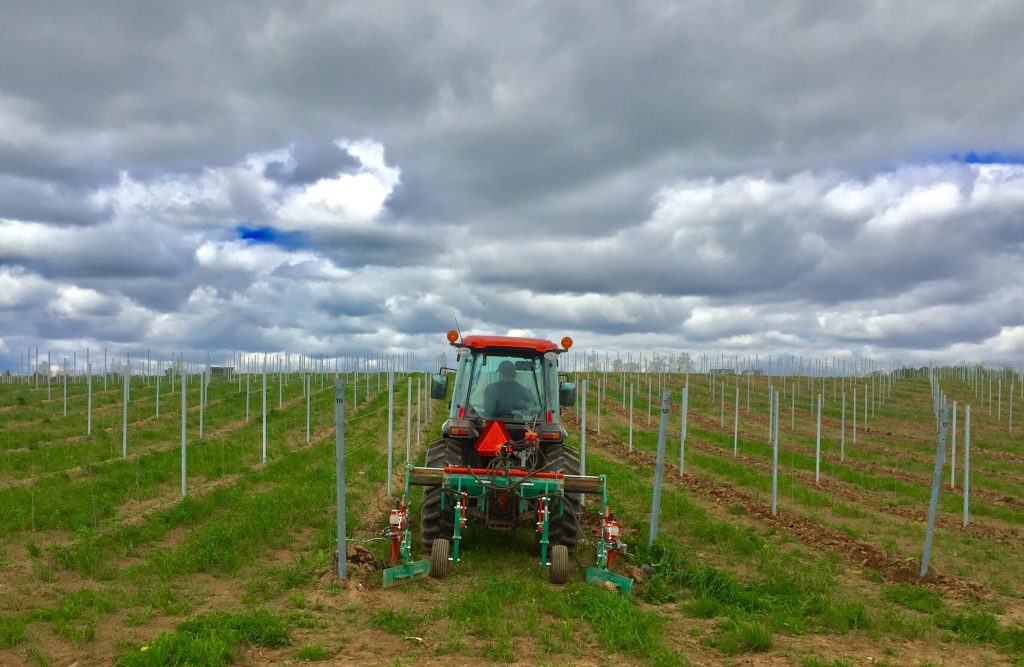
Mechanical weeding with a dual Clemens radius grape hoe
Weeding
This is a priority at Johnston Vineyards. It took 16 hours to weed 21 acres. It was done twice, the first time to downhill the mounded up soil previously uphilled in the late fall to protect the grafts and the second time to better weed the rows by cutting deeper into the soil. There are a number of adjustments that can be made on the hoe to weed more efficiently without cutting off the trunks, especially the young ones. The goal is not to use herbicides in the vineyard and to provide a porous soil over the root system.
Cover Crop
This is not well established for Nova Scotia vineyards. A concensus was reached with Lise LeBlanc of LP Consulting and Nick Juurlink from Truro Agromart to till all the rows and reseed them with Campus Green (kentucky bluegrass, creeping red fescue and perennial rye) plus a small amount of annual rye. The perennial rye that was planted last year and some of the clover came back quickly and may have choked out the Campus Green. Only time will tell. The problem with clover is that it does not grow uniformly and leave bare spots in the spring for weeds to grow. These weeds attract diseases. The goal is to establish a strong turf between the rows and not to till again. A 2 prong ripper may be used to loosen the soil over the tractor tracks in future years. Allowing a strong sod to develop between the rows seems controversial as I see other vineyards in Nova Scotia tilling every other row (which allows equipment access all rows of vines on grass).
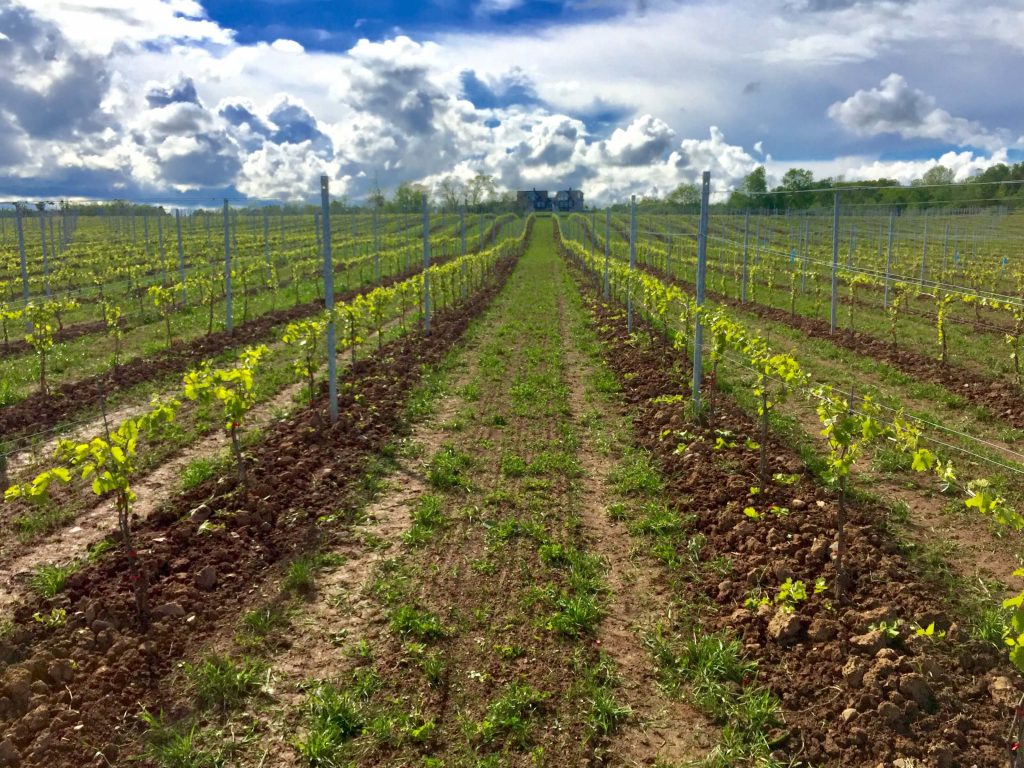
Bud break in the Riesling
Organic vs Sustainable Farming
Organic vineyards make sense. In the conventional vineyard there is a lot of synthetic chemical usage for fungus and weed control. The vineyard workers are exposed to the dried chemicals usually within 2 days of spraying when they reenter the vineyard to work. No one really knows what residuals are present in the wines. These observations have encouraged me to consider organic farming practices. The first step is sustainable farming – minimize abuse of the soil and environment to maintain a healthy system. Organic farming is more labor intensive. Spraying programs require spraying every 10-14 days. At Johnston Vineyards in Falmouth, Nova Scotia there is a lot of wind which acts to limit the spread of fungus. A mechanical grape hoe that is towed behind the tractor tills the soil under the vines and controls weeds. The main chemicals used for organic control of fungus are copper, sulfur and serenade (a biofungicide Bacillus subtilis). Organic certification goes overboard – for example requiring that all wood products in the trellis system must not be treated. Actual certification could be burdensome, but it appears to be the healthy thing to do for the workers and the environment.
Spraying has commenced using the Gregoire Paris 2000 Liter winged sprayer. It can do 4 rows at once. Only the lower nozzles are open early in the season. The wings will be opened as the canopy grows. Kumulus 1.4 kg/acre was sprayed initially for control of powdery mildew. This will be increased to 1.9 kg/acre and then increased as the weather warms up. Copper will be added to control downy mildew. Serenade can be used to control Botrytis in the grape clusters. Marchell Foch is sensitive to Sulfur and by extension Cabernet Foch is thought to be sensitive. I wonder if Cab Foch will be as sensitive especially if low doses of sulfur continue to be used and spraying in very hot temperatures is avoided. Horsetail Tea and Millstop 2 Kg/acre have been recommended by local organic growers.
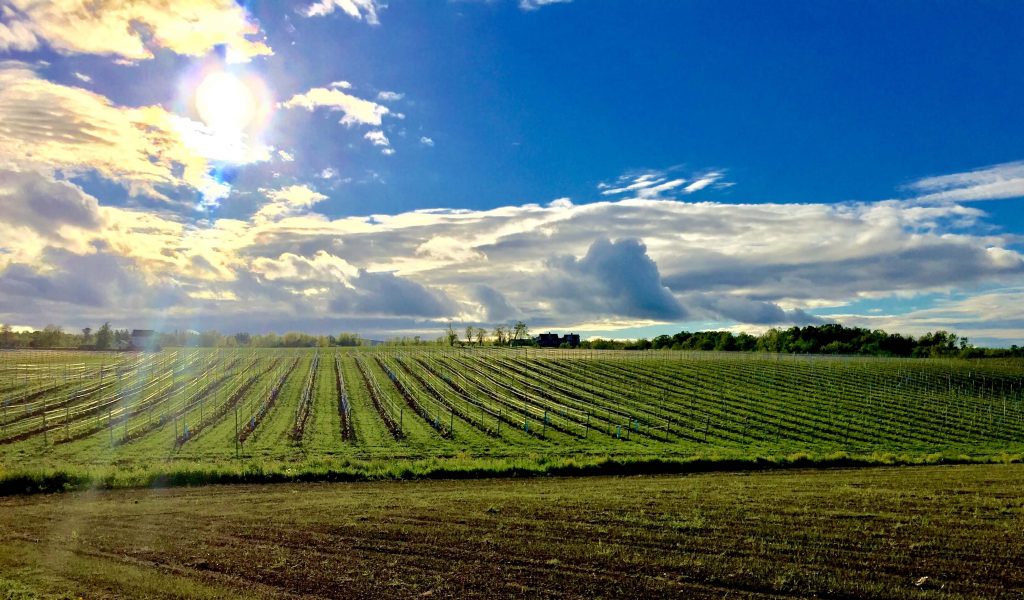
Beautiful Nova Scotia Skies Over Johnston Vineyards
Vine Replacement Program
Approximately 10% of the 3 acres of Seyval Blanc planted last year were replaced this spring. The majority of those died last summer, perhaps due to the dry summer. Also the roots may have been cut too short by the planting contractor. Others vines didn’t survive the winter and quite a few were cut off by the mechanical grape hoe this spring before the sensitivity of the cutting blade was adjusted. The Cab Foch planted on own root and from potted plants in 2015 continue to die of crown gall. Cab Foch planted last year were grafted onto root stock 3309 and so far look good this year. The Riesling 239/3309 has a low incidence of crown gall. The Chardonnay 548/3309 have a modest amount of crown gall and the Chardonnay 809/420 has the most. To summarize, root stock 3309 provides resistance against crown gall. This year 3 acres of Chardonnay 548/101-14 and 2 acres of Pinot Noir on 101-14 are being planted. The 101-14 is said to provide resistance against crown gall.
